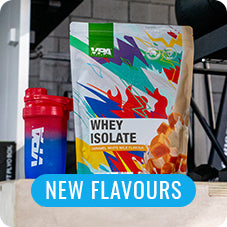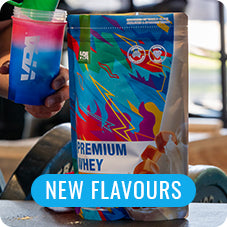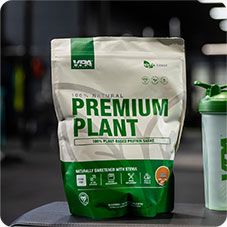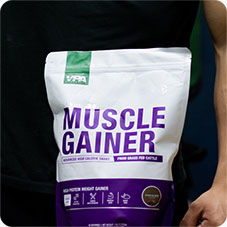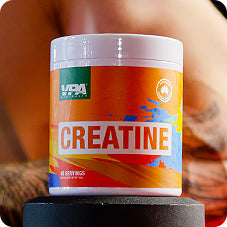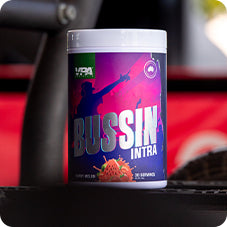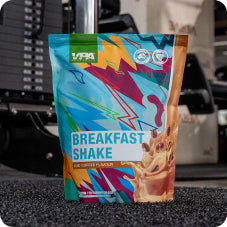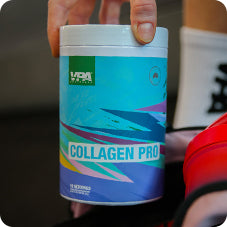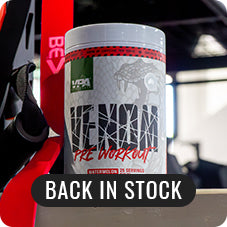Your Cart is Empty
High intensity training – how sports gels can give you an edge
May 06, 2020 3 min read

Are you a crossfit athlete or do you love high intensity training? You might not have thought about a secret tool you could use in the gym to give an edge to your workouts – sports gels. Typically thought of as a supplement used by endurance athletes, sports gels can also improve the performance of high intensity athletes. Whether you are a crossfit athlete, a rugby player, or a tennis player, sports gels can give you an edge over your opponents.
How to fuel your high intensity training
Nutrition underpins fitness and health and getting it right can help you get the most out of your training sessions.
Hydration needs for high intensity training
Regardless of how long your workout is, starting your session properly hydrated is key. You can tell if you’re properly hydrated by checking the colour of your pee – aim for a pale straw like colour. If your workout is longer than half an hour make sure you are regularly drinking. For short efforts water is fine. Once intensity starts increasing, you’ll need to think about carbohydrate and electrolyte replacement such as with a sports drink. Keeping your water cool will help keep it palatable and help you drink more.
Fuel for high intensity training
When you exercise your body uses two sources of fuel to feed your muscles – fat and carbohydrates. Carbohydrates are used as the main fuel source – and are relied on more for high intensity exercise. We store carbohydrates as glycogen in the muscles. As we exercise, muscle glycogen levels begin to fall. If these stores are not replenished performance can be affected. To start your session with your glycogen stores full, eat a carbohydrate rich snack or meal 2-4 hours before training. With a couple of hours before your workout a sandwich and a piece of fruit is great (I love toast with peanut butter and sliced banana). The closer to the start of your workout the easier to digest your snack needs to be – this is where a sports gel can be a quick, easy to digest option.
For training sessions less than an hour water is sufficient. If you are exercising for more than 75 minutes you will benefit from some additional carbohydrates during your workout. Ideally, you will take in about 30-60 grams of carbohydrates every hour. This will maintain blood glucose levels to fuel your muscles and brain and help you avoid “hitting the wall”. You’ll also get more out of your training session as you will be able to sustain the intensity for longer. Sports gels can provide simple sugars which are quickly absorbed into your blood stream as glucose to give you a spike in energy. Sports gels can also contain other ingredients like electrolytes such as sodium to replace minerals lost through sweat. They can be an easy way to quickly top up your energy stores before they fall and affect performance.
About VPA® Performance Gels
VPA® Performance Gels use two types of carbohydrates. They contain fast acting fructose to give you a quick acting energy boost. They also contain maltodextrin which is a slower acting energy source. Using two types of carbohydrates means that your gut can absorb more carbohydrate, and your muscles will get a steady stream of energy. Using multiple types of carbohydrate is easier for the stomach to digest, promotes muscle carbohydrate oxidation and enhances performance .
VPA® Gels provide 25g of carbs and 100 calories in each gel. As they contain water they are more convenient and quicker to absorb. They also contain sodium to replace electrolytes lost from sweat.
How do I use sports gels?
Start taking gels early in a long high intensity training session to keep the glycogen stores topped up . This allows you to perform at your peak. Give the body time to use the gels before adding another one on top. One gel every 45 minutes to an hour is sufficient – there is no benefit from over consuming them. If you are preparing for an event, include gels in your sessions to allow the body to adapt and benefit from their use.
Next time you’re out for a hard high intensity session try taking a gel and notice the difference it makes!

Rachel Eagleton
Rachel Eagleton (MHumNut) is a university qualified Clinical Nutritionist based in Sydney, Australia. She is a busy working mum of two teenagers, so is practical and realistic with her advice. Rachel offers private consultations to improve your sporting performance, or your general health and well-being.
Also in Training

Boosting Your Health: Understanding Aerobic and Anaerobic Metabolism
July 22, 2024 4 min read
Learn about the key differences between aerobic and anaerobic metabolism, and how to optimize your workouts for better health and fitness. Discover the benefits and performance-boosting potential of combining these two metabolic powerhouses.
Read More
Smash Through the Wall: How to Increase Your Lactate Threshold for Running Glory
July 08, 2024 4 min read
Learn science-backed strategies to boost your lactate threshold, enhance running performance, and achieve your fitness goals. Discover expert tips and techniques here.
Read More
The Ultimate Guide to Cross-Training
July 01, 2024 5 min read
Learn about cross-training, crafting a plan, tailoring for different fitness goals, and activities beyond the gym. Discover the ultimate fitness guide at VPA.
Read More Recent Articles
- Boosting Your Health: Understanding Aerobic and Anaerobic Metabolism
- Smash Through the Wall: How to Increase Your Lactate Threshold for Running Glory
- The Ultimate Guide to Cross-Training
- Embrace the Cold: How to Stay Active and Healthy Throughout Winter Down Under
- What is Hyrox?
- Mastering the Pull-Up
- Building a Champion: Why Cardio and Strength Training are Your Fitness Dream Team
- Beyond the Six-Pack: Building a Strong Core for Everyday Life
- Routine and Discipline – The Backbone of Fitness
- Calisthenics for Beginners


